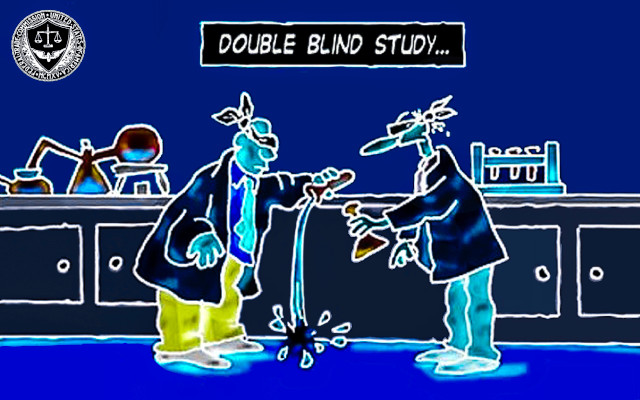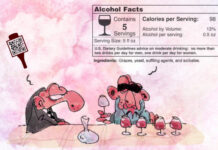Federal Trade Commission (USA) has updated its guidelines on the use of health claims and bans on misleading advertising on food and non-food products. (1)
The guide does not have the force or effect of law, but is intended to help advertisers ensure fairness and transparency in consumer-facing information.
1) FTC, Health Products Compliance Guidance. Foreword
Federal Trade Commission
(FTC, U.S.) issued in late December 2022 a revision of previous guidelines on health-related label information. The document at the time-Dietary Supplements: An Advertising Guide for Industry (1998)-considered only dietary supplements.
In contrast, the new guidance-Health Products Compliance Guidance-considers a wider variety of products, thanks to the more than 200 cases covered over the past 25 years. Commonly used foods, over-the-counter drugs and homeopathic products, medical devices and aids, diagnostic tests, and health-related apps.
2) Health claims in the USA. The three guiding criteria
2.1) SCIENTIFIC EVIDENCE
Benefit claims must be supported by ‘competent and reliable scientific evidence,’ understood in general terms as tests, analyses, research or studies conducted and evaluated by experts in an objective and generally accepted manner in the field.
Health benefits must be demonstrated through in the form of randomized, controlled human clinical trials (RCTs). (2)
The reliability of clinical trials is assessed by sample size, duration and results. A predetermined number of RCTs is not required, although confirmation of research in multiple independent studies is appreciated.
-
Levels of scientific evidence
Epidemiological studies, including cohort studies, are considered an ‘acceptable substitute‘ for randomized clinical trials (RTCs) as long as theyare of ‘high quality‘ science. Particularly when RTCs are not found to be feasible or otherwise fit for purpose.
In contrast, randomized clinical trials cannot be replaced by in vitro studies, (anecdotal) surveys of consumer experiences, public health recommendations (such as advice from a medical organization).
-
‘Clinically tested ingredient‘
The words ‘clinically tested ingredient‘-on a product label and/or advertisement-can mislead consumers into believing that the claimed benefit applies to the entire product.
The operator should therefore check with an expert in the field to see if the product as a whole also needs to undergo appropriate clinical trials to demonstrate the actual relevance of the claim.
2.2) QUALITY OF EVIDENCE
The scientific research on which health claims are based must meet some basic criteria:
→ control group
. Clinical trials must have a control group, appropriate randomization, and similar variables between the treatment and control groups,
→ double blind studies
. Neither the participants nor the researchers need to know which of the former is part of the treatment or control group until the tests are completed,
→ results must be significant in both statistical and clinical aspects.
-
Scientific review
Scientific reviews supporting health claims disseminated in the U.S. must consider the totality of available studies, not just those related to the benefits they are intended to demonstrate.
Claims based on traditional uses must come with scientific evidence to support the claimed benefits. As indeed is the case in the European Union. (3)
2.3) TRUTHFULNESS OF INFORMATION
News provided in advertisements must always be truthful and not misleading. Advertising is defined as any commercial information related to products.
It has regard to both traditional tools–brochures, trade shows and conferences, television, the Internet–and social marketing and influencer marketing.
Those who participate in deceptive marketing, including advertising agencies, are themselves partially responsible.
-
Clarity and comprehensibility
Clarity and understandability for the average consumer are essential to ensure transparent information. Which must be:
→ clearly visible. ‘Hard to miss,’ the Federal Trade Commission points out,
→ expressed at equally clear speed and volume, where vocal expressions are involved.
Vague expressions-such as ‘may‘, ‘helps‘, ‘promising‘, ‘preliminary‘, ‘initial‘, ‘pilot‘-may be misleading when they suggest to the consumer health claims lacking suitable scientific evidence (see para. 5). (4)
3) Deceptive Advertising
Misleading advertising occurs whenever the operator (or advertiser) fails to comply with the above requirements. That is, when it:
→ promotes advantages or features of the product that cannot be proven. Even suggesting that the product, in affecting a particular health condition (a symptom, for example), is useful in treating the disease, (5)
→ Omit relevant information. Such as any significant limitations on the advertised health benefit or any safety risks associated with the routine use of a product.
4) Federal Trade Commission, powers and remedies.
FTC has the power to ask the Tribunal:
- The discontinuation of misleading advertising and its revision so that the truthfulness and accuracy of the information is restored,
- prohibiting the individual operator, in the most serious cases, from continuing marketing activities,
- financial remedies, including reimbursement to the consumer and payment of civil penalties.
When circumstances require it, the Federal Trade Commission can directly impose a stop to deceptive advertising and order the marketer to engage in corrective advertising to remedy the deceptions.
5) FDA-FTC Liaison Accordance.
The two authorities FTC and FDA(Food and Drug Administration) share jurisdiction over the marketing of food and dietary supplements, drugs, medical devices and other health-related products. FDA-FTC Liaison Accordance gives FDA responsibility for label claims and FTC responsibility for claims in all forms of advertising.
The FTC guidelines, as noted above, do not distinguish between either product categories or types of health claims. FDA conversely distinguishes between products (in foods, supplements or drugs) and health claims (e.g., Significant Scientific Agreement and qualified health claims). (4) FTC does not require prior approval of health claims and yet considers determinations by FDA. (6)
Dario Dongo and Alessandra Mei
Notes
(1) Federal Trade Commission (FTC, USA). Health Products Compliance Guidance. https://www.ftc.gov/system/files/ftc_gov/pdf/Health-Guidance-508.pdf December, 2022
(2) One substantial difference between the current rules in the US and the EU concerns precisely the scientific demonstration of health claims on foods through clinical trials. In fact, only in the EU are studies expected to be performed exclusively on healthy individuals, thus restricting the possibility of demonstrating the efficacy of a substance’s intake to the sole and narrow range of homeostasis
(3) Dario Dongo. Health claims on botanicals, the Court of Justice provides clarity. GIFT (Great Italian Food Trade). 13.10.20
(4) Separate discussion is that of disclaimers in FDA-approved qualified health claims . See footnote 4 in article by Dario Dongo. Oleic acid and coronary heart disease prevention, green light in USA. GIFT (Great Italian Food Trade). 2.12.18
(5) The example offered by FTC is the advertising of nose patches against snoring. The operator must not mislead the consumer into believing that the use of such patches can cure sleep apnea. Unless we are able to provide scientific evidence of the extent of their benefits, not only on the symptom but also on the disease
(6) Health claims that do not meet FDA’s significant scientific agreement may be considered deceptive by FTC unless the scientific uncertainty is explicitly disclosed in the advertisement









